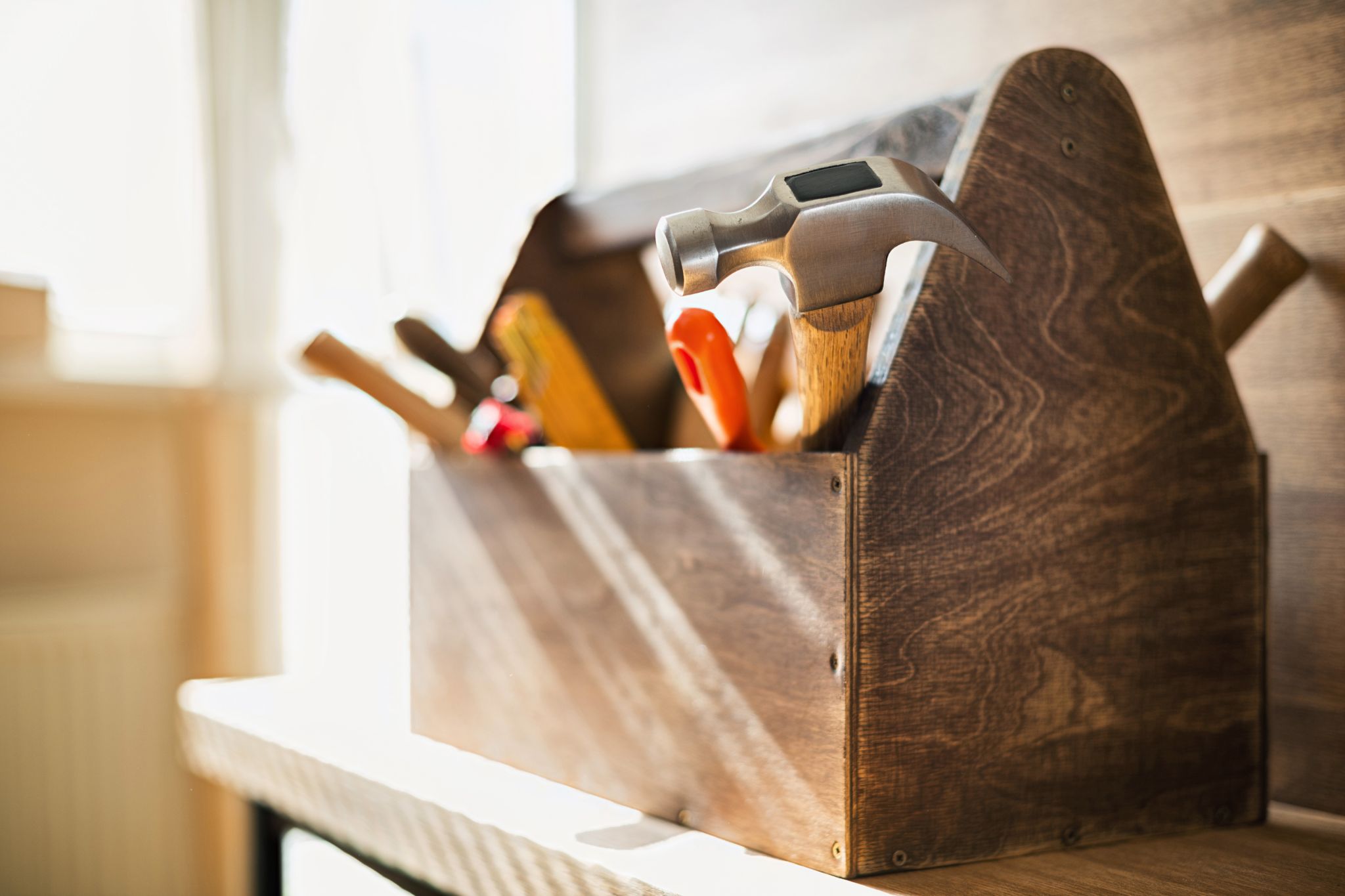When Lauren Hunter and her husband moved into their first home in Hilliard, Ohio, the previous homeowner had left behind a ladder. "It turned out to be awesome," Hunter says. "You don't realize how many situations where ladders make things easier. Hanging pictures is one thing, but try hanging curtains in a two-story great room."
Whether it's the need to hang a clock just a few feet higher or the realization that you really can't hold a flashlight and get that nut loosened under the sink, there's always something catching you by surprise as a homeowner.
With the right items on hand, however, you can be prepared for every scenario -- just like Hunter was, thanks to that ladder.
Here's things you should buy for a new house:
#1 Wet-Dry Vacuum
You're gonna be spilling stuff. Look for a wet-dry vacuum that can handle everything from paint to nails and small stones. "We inherited one of those with our first house, and it was an awesome thing to have for vacuuming the car and cleaning the garage," Hunter says. Unlike the ladder, "we kept that Shop-Vac when we moved."
#2 (The Right) Fire Extinguisher
"Whenever anyone I know moves, I give them a fire extinguisher as a housewarming gift," says Nina Patel, a Silver Spring, Md., homeowner who, years ago, accidentally set her apartment on fire with a homemade candle. "I was able to put out the fire with a pan of water, but it was a panicked moment. I've had my own fire extinguisher ever since."
But before going out and buying the first extinguisher you see, check out the U.S. Fire Administration's guide. There are five different types of fire extinguishers with different uses, from extinguishing cooking oils to wood and paper. Choose the best type or types for your home.
#3 Extension Cord Organizer
Home ownership seems to breed extension cords that grow into a tangled nest. Save yourself time and hassle, and splurge on one of several cord management devices. Or make your own with a pegboard, hooks, and velcro straps to keep each cord loop secure. Either way, your cords will be knot-free and easy to find. And be sure to include a heavy-duty extension cord in your organizer that's outdoor-worthy. You don't want to really have to use that fire extinguisher.

#4 Big-Kid Tools
Odds are you already own a bunch of the basics: drill, screwdriver, hammer, level, tape measure, wrench, pliers, staple gun, utility knife, etc. But home ownership may require a few new ones you might not have needed before, including a:
- Stud finder. You can make as many holes in the walls as you want now. Use the stud finder to figure out where to hang those heavy shelves so they're safely anchored.
- Hand saw. Much easier (and cheaper!) than a power saw, you can get a good cross-cut saw for smooth edges on small DIY projects.
- Ratchet set. Every bolt in your new house belongs to you, so you'd better be able to loosen and tighten them when needed. Crank that ratchet to get to spots where you can't turn a wrench all the way around. Great for when you're stuck in a corner.
- Pry bar. Get one with a clawed end to pull nails and a flat end to separate drywall, remove trim or molding, and separate tile.
#5 Tool Kit
You'll need something to carry all those tools around from project to project. Create a tool carrier using a tool bucket liner and an old 5-gallon bucket. Or invest in a handyman belt filled with the basics to keep on hand in the kitchen.

#6 Headlamp
Take that flashlight out of your mouth and work hands-free. From switching out a faucet to figuring out what's making that clicking noise behind the washer, there are plenty of homeowner tasks that require both hands and a little artificial light.
#7 Emergency Preparedness Kit
FEMA has a great list of supplies you should have in your kit, including cash, food, water, infant formula and diapers, medications, a flashlight, batteries, first aid kit, matches, sleeping bags, and a change of clothing. The agency recommends you stock enough for every member of your household, including pets, for at least 72 hours.
#8 Ladder(s!)
But not just any old ladder. Consider:
- How high you need to go. If you use an extension ladder for a sky-high job, school yourself on safety tips, such as not standing above the support point.
- Where you'll use it. Make sure all four legs on a stepladder rest safely on a flat area. A straight ladder must be set up at a safe angle, so if a ceiling is too low, it might be too long for the room.
- How heavy-duty it is. Check the ladder's duty rating so you know how much weight (you, your tools, paint cans, etc.) it'll support.
And don't forget about the all-important escape ladder. The Red Cross recommends them for sleeping areas in multistory homes.
#9 Confidence
“Especially for first-time home buyers. You're inheriting the responsibilities a landlord would have if you were renting," says Hunter. "Mowing isn't a big deal, but maybe fixing a shingle or changing a faucet is." But with a little self-confidence — and some YouTube tutorials — there's (almost) no DIY project you can't master.
